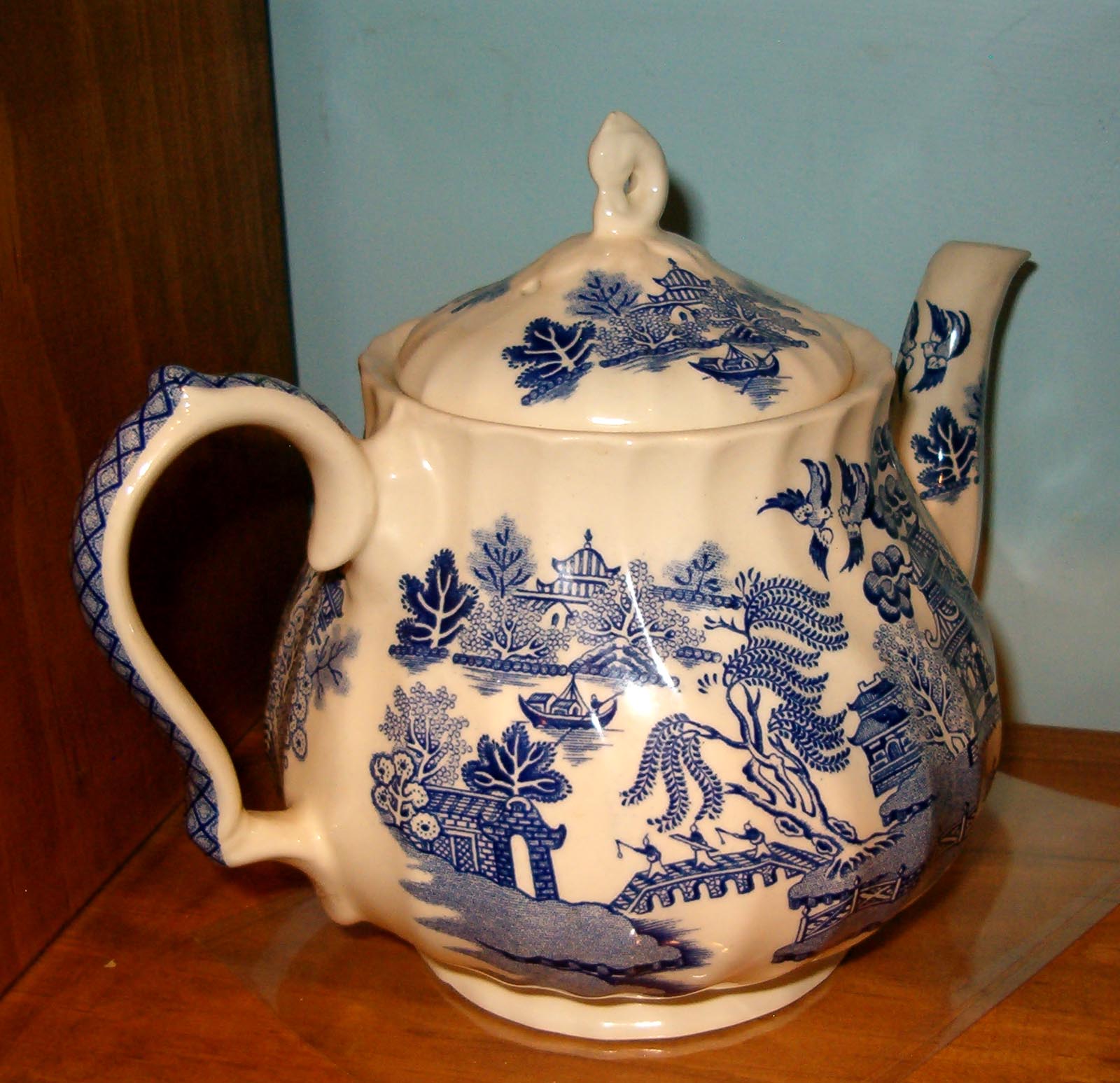Blue Willow Teapot
Blue Willow Teapot
By Inga Milbauer
Two birds flying high,
A Chinese vessel, sailing by,
A bridge with three men, sometimes four,
A willow tree, hanging o’er,
A Chinese temple, there it stands,
Built upon the river sands,
An apple tree, with apples on,
A crooked fence to end my song.
 All the elements in this nineteenth century English rhyme can be found in the design of this teapot!
All the elements in this nineteenth century English rhyme can be found in the design of this teapot!
The “Willow” or “Blue Willow” design originated in the Caughley China factory in Caughley, Shropshire, England in the 1780s. Because of the lack of patent protection of designs, and the practice of potters lending engravings and copying designs, it is uncertain if Thomas Turner or his apprentice Thomas Minton developed the design.
Traditional motifs from imported Chinese designs were used by many British pottery manufacturers at the end of the 18th century. The Willow pattern quickly spread to other factories, and it became one of the most widely known chinoiserie pattern. Chinese imitations of the British Willow pattern on porcelain were made for export to Europe, which strengthened the belief that this was an ancient Chinese design. This led to the creation of a “traditional Chinese” legend, about a forbidden love between a couple who eventually were transformed into two white doves so they could be together and live in happiness. Both the appeal of the legend and the mass production of porcelain with the Willow design further increased its popularity1.
The teapot in our collection was manufactured in England by James Sadler & Sons Ltd. James Sadler founded the company in 1882 in Burslem (part of the city Stoke-on-Trent), Staffordshire, England. The company initially produced red clay fine earthenware teapots with a dark brown glaze, which became known as “Brown Betty” teapots. In the 1930s, the company began making novelty shaped teapots. In 2000, Churchill China purchased the company’s right to use its name and designs. The local availability of clay, salt, lead and coal in North Staffordshire led to the area becoming a center of ceramic production in the early 17th century. It became the largest producer of ceramics in Britain and large export markets took Staffordshire pottery products around the world, especially in the 19th century. Although production declined in the late 19th century, several potteries from this area still exist today, including Churchill China, Portmeirion, Royal Doulton, Spode and Wedgewood.
____________
Acknowledgements: Photography by Nancy Filgate, https://www.britannica.com/art/Caughley-ware, https://www.britannica.com/art/Willow-pattern, www.english-teapots.com, https://en.wikipedia/wiki/James_Sadler_and_Sons-Ltd, https://en.wikipedia.org/wiki/Staffordshire_Potteries, https://en.wikipedia.org/wiki/Willow_pattern, 1http://www.nyu.edu/projects/mediamosaic/madeinchina/pdf/Portanova.pdf, https://www.rubylane.com/blog/categories/vintage-collectibles/treasure-box-antiques-a-beginner-s-guide-to-collecting-blue-willow, http://www.thepotteries.org
